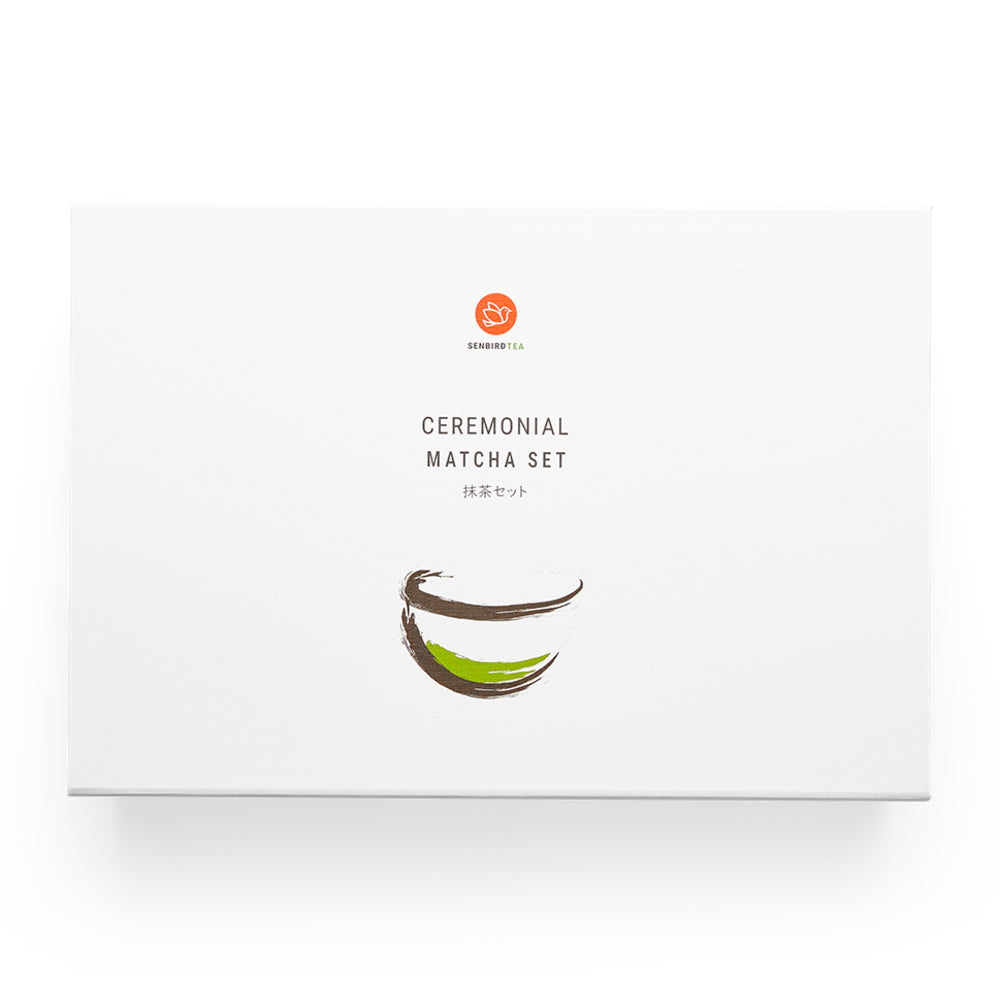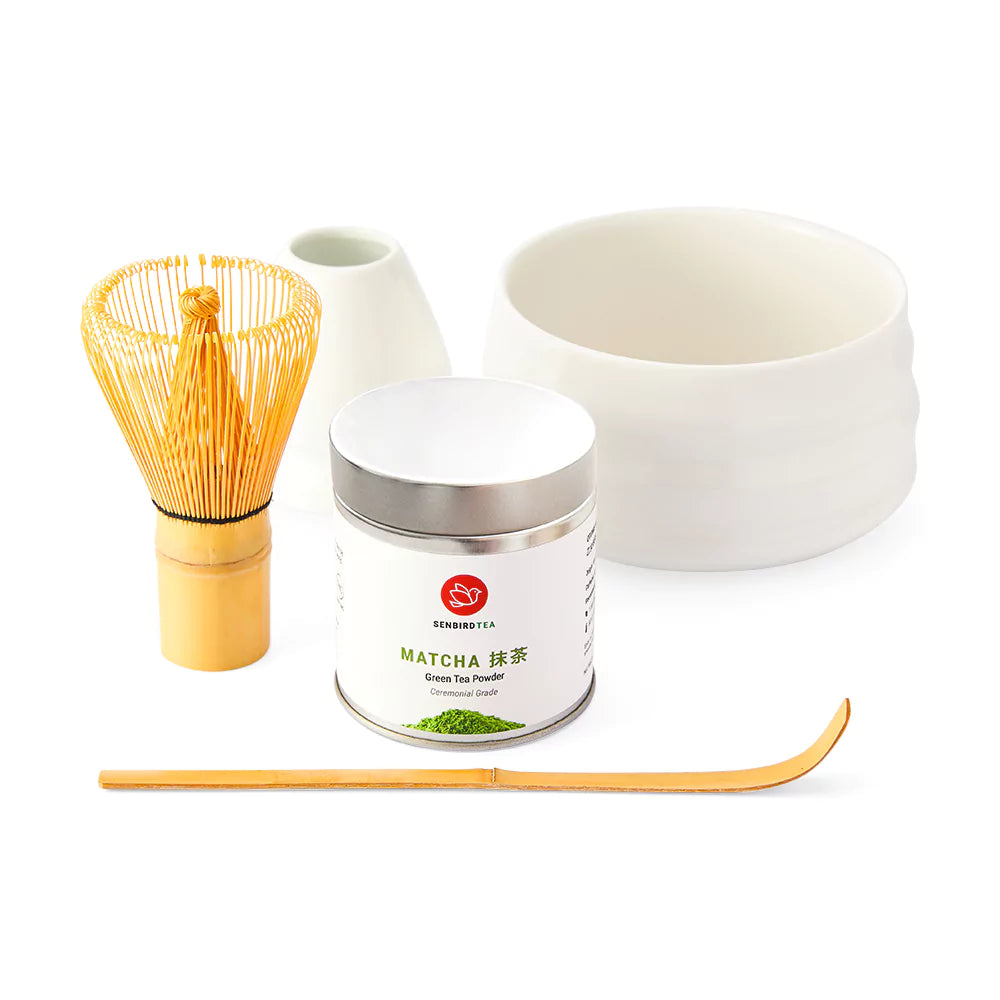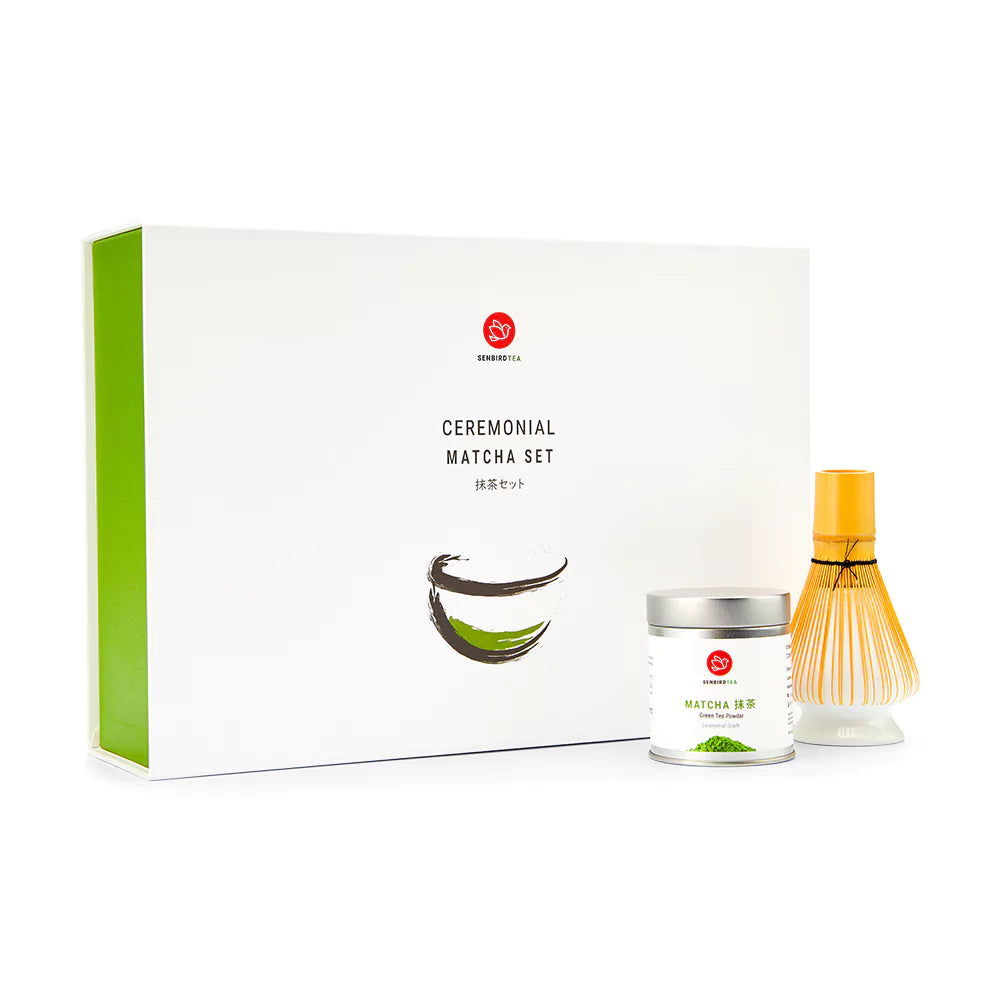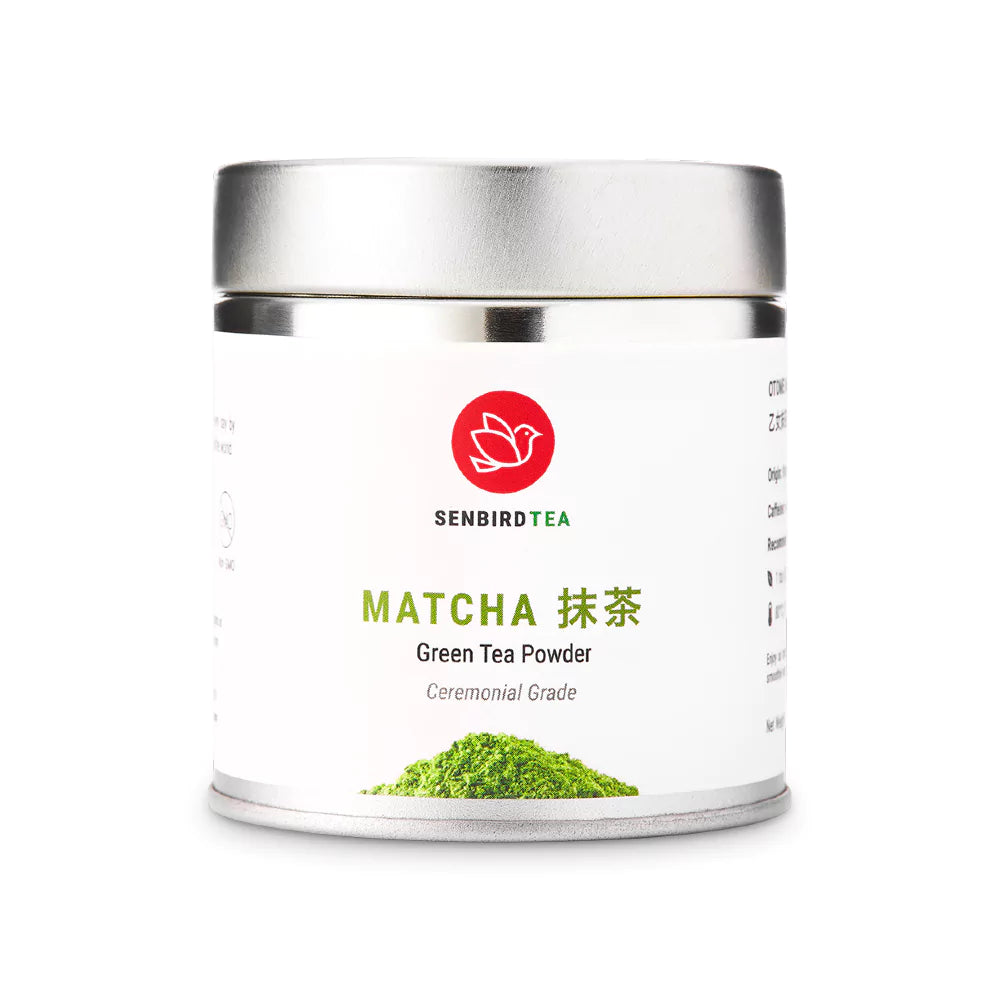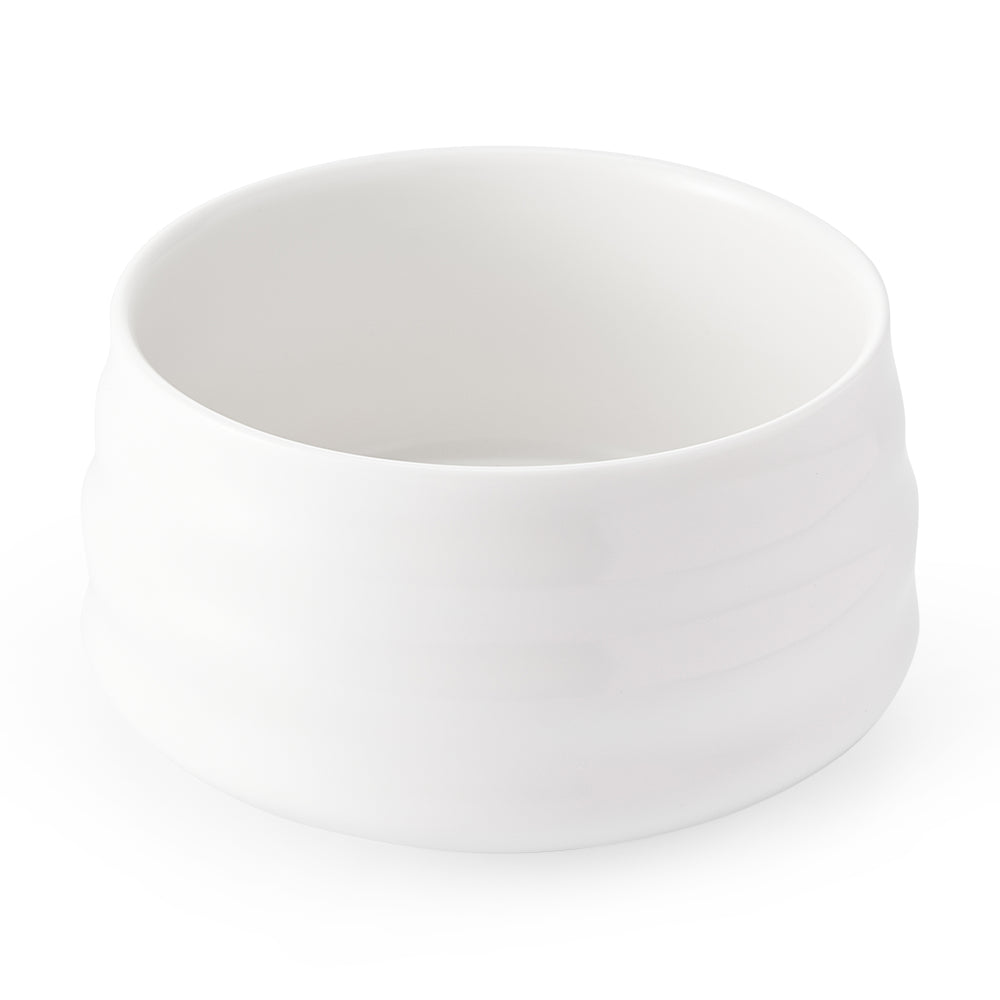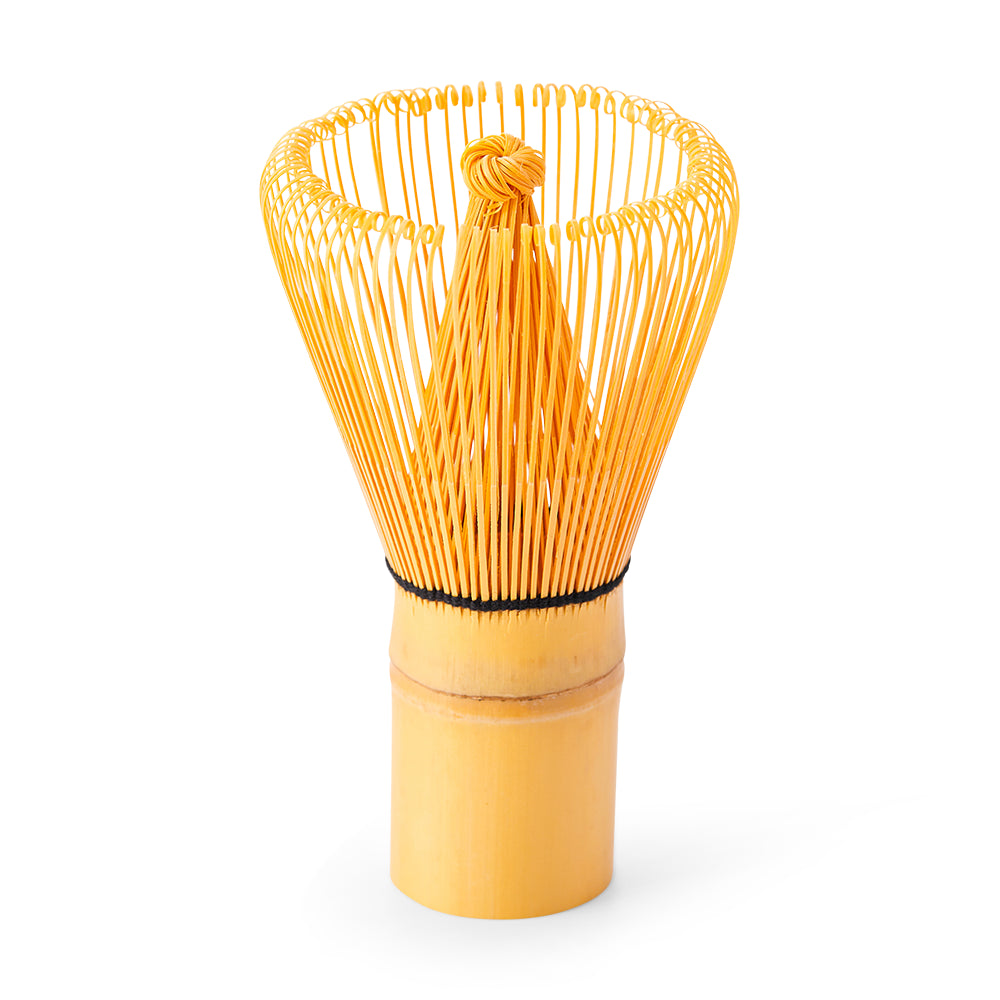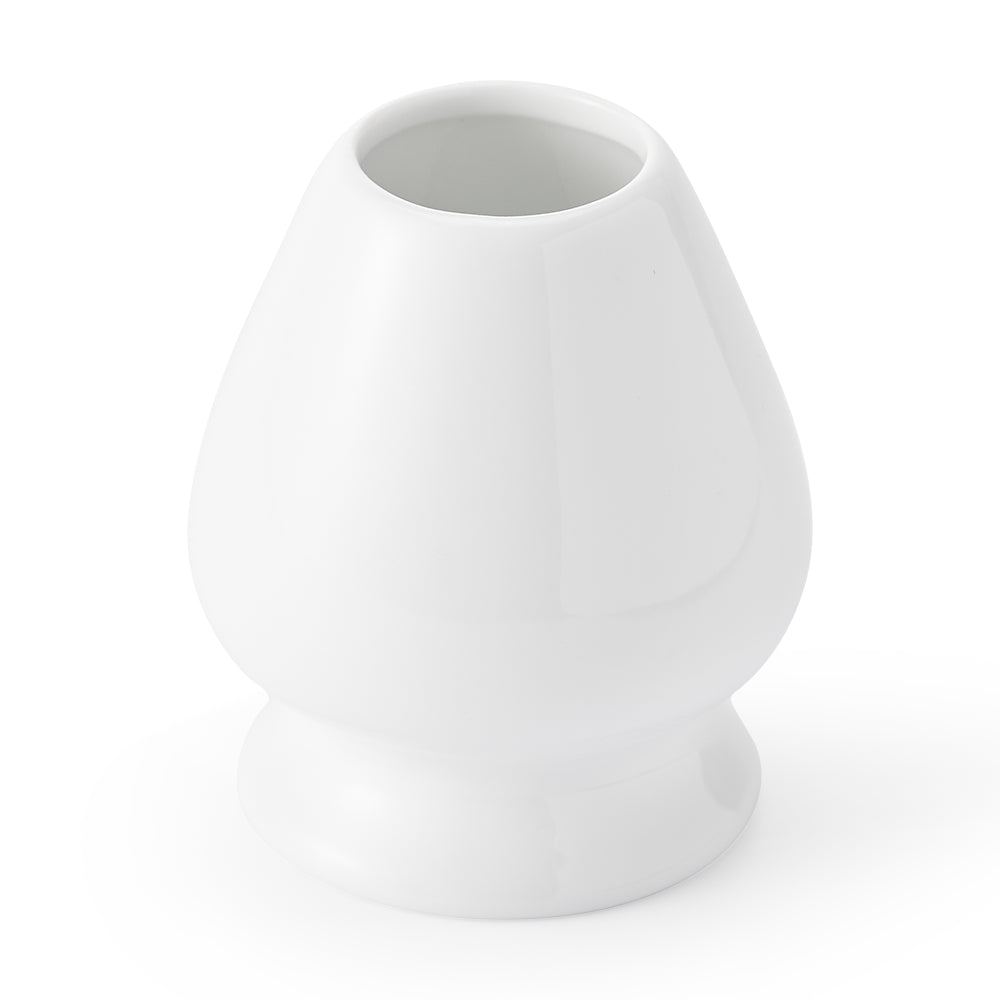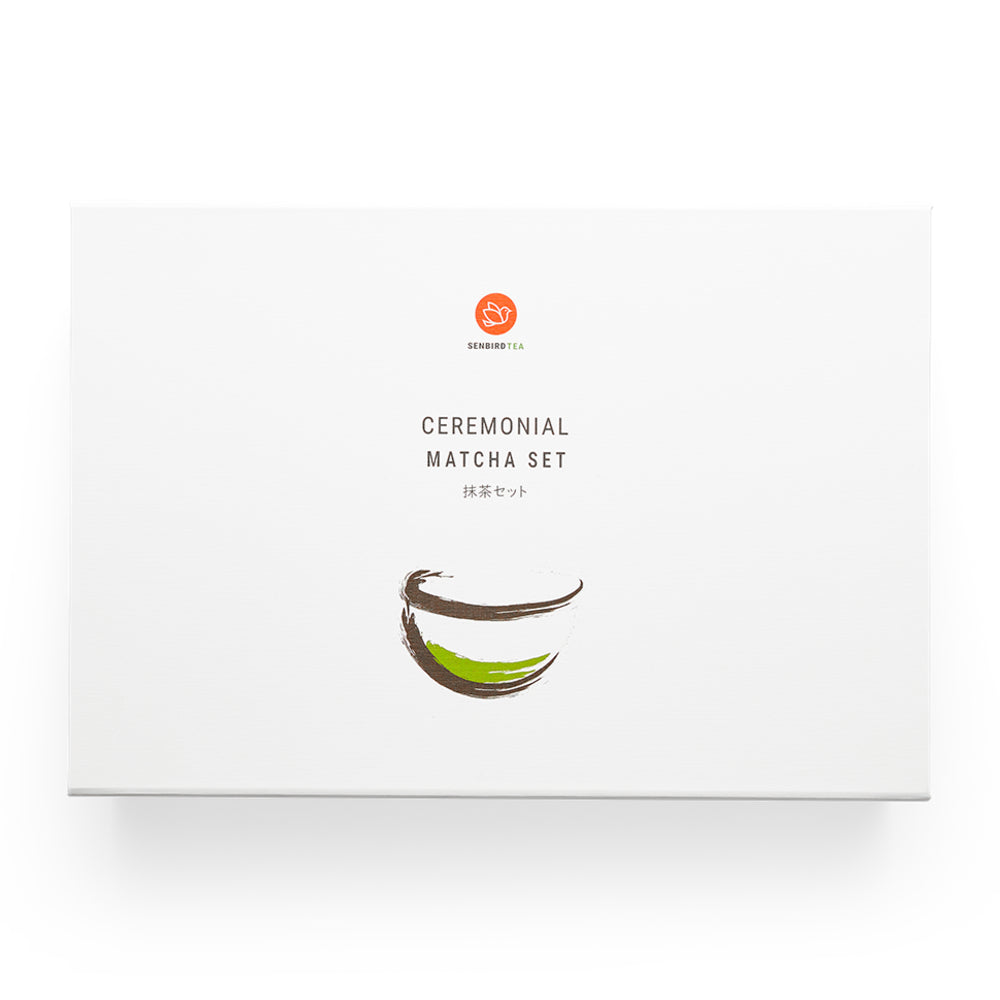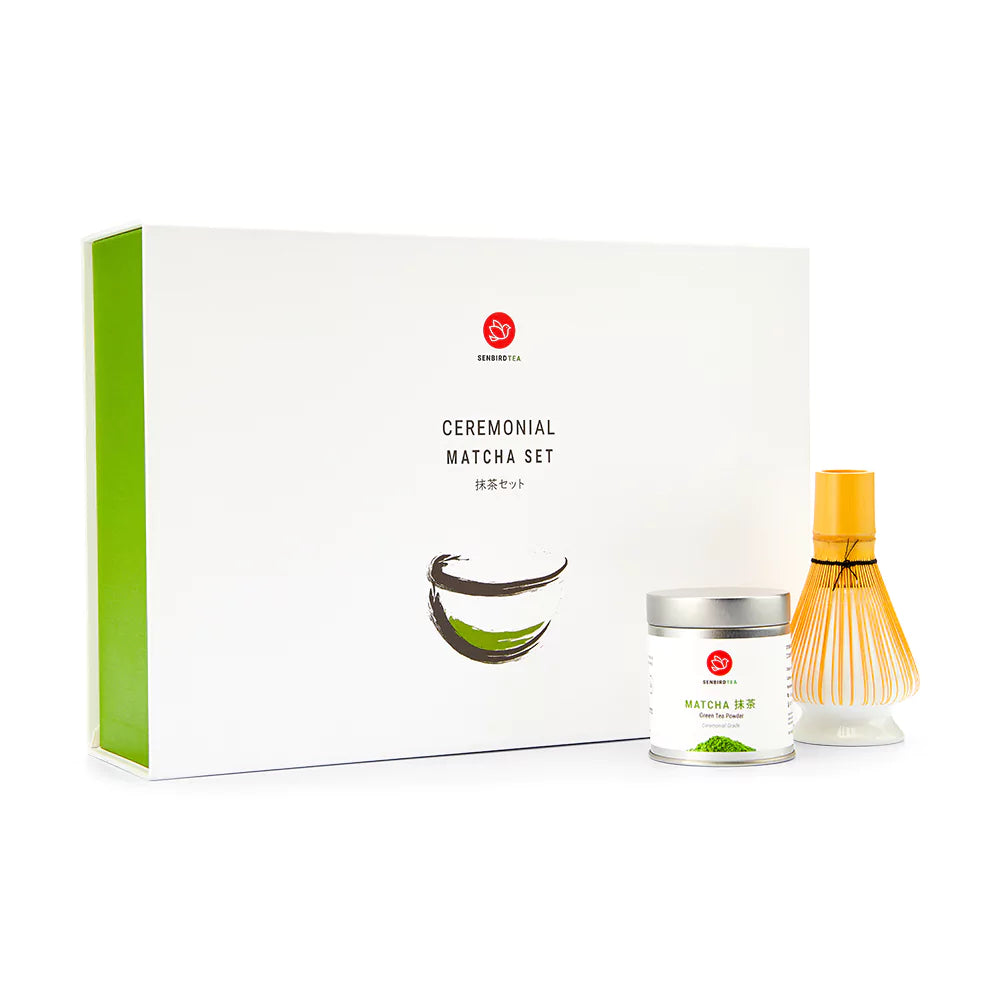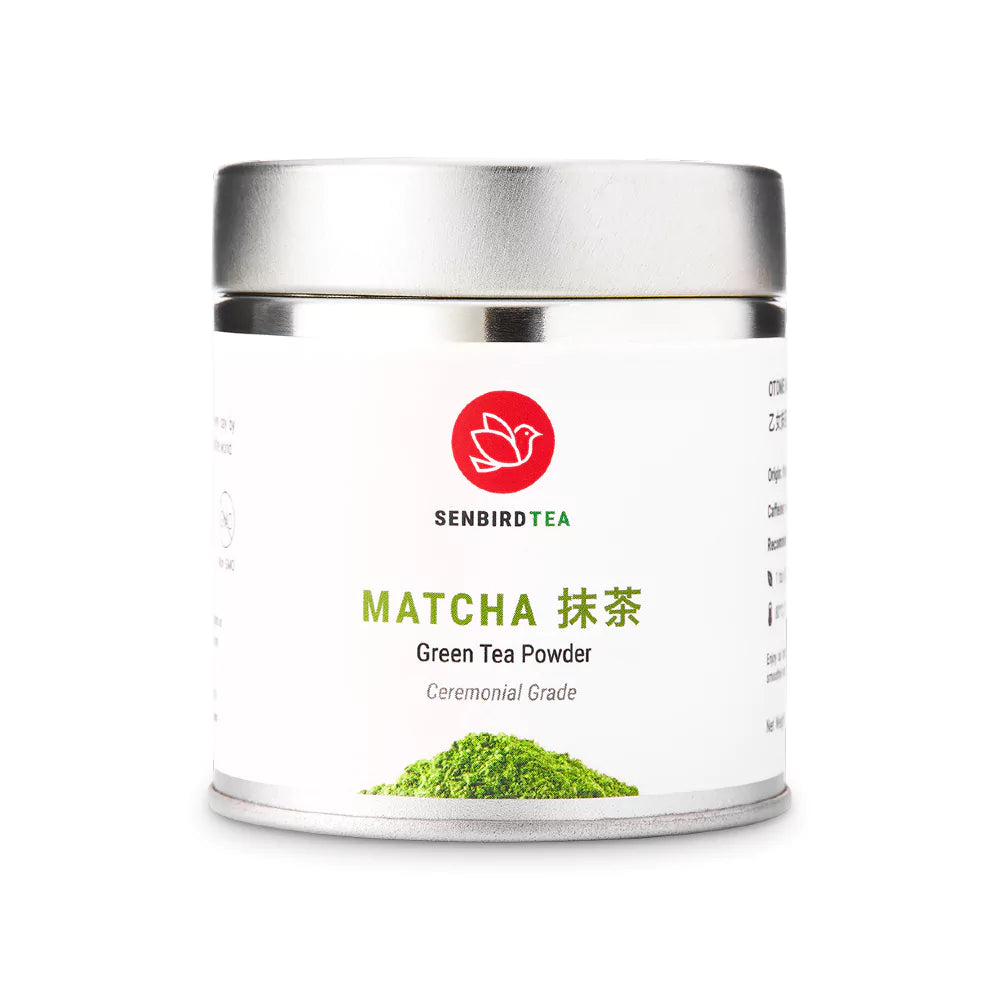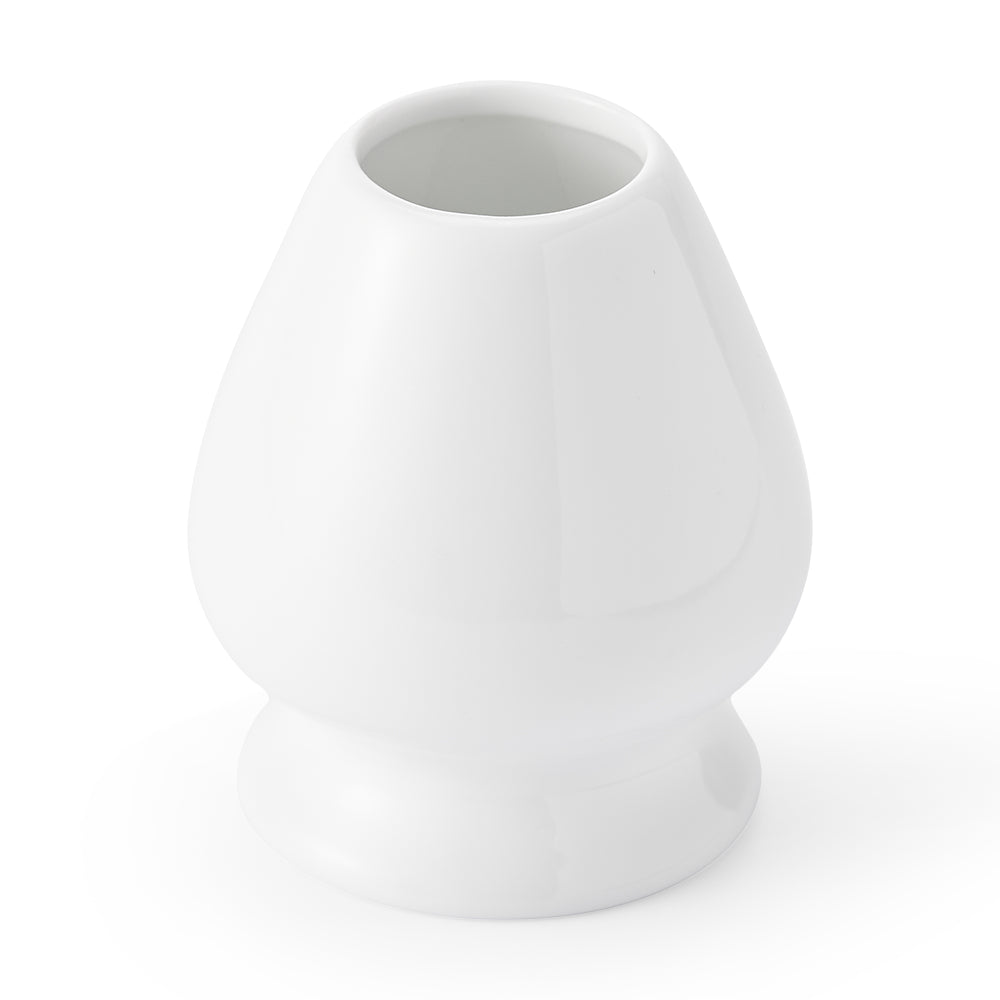
A Guide to the History of Matcha Tea Ceremonies
Table of contents
What is a Japanese matcha tea ceremony?
What is the history of the matcha tea ceremony?
How do you host a tea ceremony?
Why is the Japanese tea ceremony important?
What we learn from the history of matcha tea ceremonies
Main takeaways
-
The history of the matcha tea ceremony (sadō) is centuries-old. It is a ritual centered on mindfulness, harmony, and the preparation of matcha.
-
Over time, its origins connected monks, samurai culture, and the teachings of tea master Sen no Rikyū.
-
Today, every gesture, utensil, and step in the ceremony reflects intention and respect.
-
As a result, tea ceremonies offer a way to slow down, reconnect, and appreciate Japanese tradition.

Harmony, respect, purity, and tranquility – these are the four principles of the traditional matcha tea ceremony (also known as a Japanese chanoyu or sadō). More than just preparing tea, this essential part of Japanese tea culture is an art form steeped in tradition.
In this guide, we'll explore matcha tea ceremony traditions and history, and explain why it’s such an important part of Japanese culture.
What is a Japanese matcha tea ceremony?
The matcha tea ceremony is a practice that celebrates mindfulness, connection, and the simple joy of sharing tea. At its heart is matcha, a finely ground green tea that’s carefully whisked to create a smooth, vibrant green cup.
Rooted in Zen philosophy, the ceremony transforms making and drinking tea into an intentional act that encourages peace, presence, and appreciation for life’s small moments. Because of this, it invites participants to slow down and carefully perform each step. Every gesture, from the way the tea is prepared to how it’s offered, reflects harmony and respect between the host and guest.
Once reserved for monks and samurai seeking spiritual clarity, the Japanese matcha tea ceremony transformed into a cherished cultural ritual enjoyed by people all over Japan. Even now, it reminds us to slow down, savor each sip, and find beauty in simplicity.

What is the history of the matcha tea ceremony?
To truly understand the history of Japanese tea ceremony practices, let's journey back over a thousand years.
Tea first arrived in Japan from China around the 8th century, where monks and the upper class used it as a medicinal drink to promote focus and well-being. Later, in the centuries that followed, green tea became part of temple rituals, helping monks stay awake during long hours of meditation and prayer.
By the 13th century, tea spread beyond the temples to the samurai and noble classes, becoming a symbol of status and refinement. Lavish tea gatherings became popular, with guests showing off prized tea bowls and rare tea leaves. However, these social events evolved into something quieter and more spiritual.
During the 15th and 16th centuries, tea master Sen no Rikyū shaped the practice into what we now know as sadō, “the way of tea.” He emphasized finding beauty, humility, and appreciation in the imperfect — principles now known as wabi-sabi. Rikyū also defined the four virtues of tea: wa (harmony), kei (respect), sei (purity), and jaku (tranquility).
These values remain at the heart of the traditional matcha tea ceremony today. What began as a simple act of drinking tea became a deeply meaningful ritual that invites stillness, connection, and gratitude in every cup.

How do you host a tea ceremony?
A traditional matcha tea ceremony is both an art and a meditation. It’s a quiet sequence of gestures and rituals that invite harmony, respect, and presence. While a full, formal ceremony (chaji) can last several hours and include a multi-course kaiseki meal, most modern ceremonies (chakai) are shorter, focused on enjoying a single bowl of matcha in shared appreciation.
Every step of the ceremony — from entering the teahouse to sipping the final drop — is guided by tradition passed down from generation to generation. Although variations exist between schools, the spirit remains the same: mindfulness in every movement.
Preparing the Setting
Traditionally, the ceremony takes place in a simple, serene tearoom surrounded by a garden. Guests follow a stone path, pausing to purify their hands at a stone basin before entering. Inside, the room is quiet and uncluttered, with only a hanging scroll or seasonal flowers in an alcove. These touches help the host create a specific mood for the gathering.
Welcoming the Guests
Guests enter the tearoom through a small doorway, bowing low to symbolize humility. Once seated on mats, they take a moment to appreciate the space and offer gratitude to the host. In a full chaji, a beautifully prepared kaiseki meal is served, followed by sweets that complement the delicate bitterness of the tea.

Preparing the Tea
When it is time to prepare the tea, silence fills the room. The host begins by purifying the tea whisk, scoop, and canister. Carefully measured matcha is placed into the bowl, followed by hot water from an iron kettle. With graceful, practiced motions, the host whisks the tea into a smooth, frothy consistency.
Serving and Enjoying
The host presents the bowl of tea to the guest with a bow. Before drinking, the guest bows in return, rotates the bowl slightly as a sign of respect, and takes small, mindful sips. In this way, each gesture honors the connection between host and guest.
Closing the Ceremony
After each guest receives tea, the host gently cleans and returns each utensil to its original place. The ceremony concludes with a final bow and words of thanks, acknowledging the shared moment.
Though most ceremonies follow and draw from tradition, no two are ever the same. Each reflects the season, the space, and the people present.

Why is the Japanese tea ceremony important?
The Japanese matcha tea ceremony holds a special place in Japan’s cultural heritage. What began as a spiritual practice among monks, and later a refined ritual among samurai and nobility, has grown into a cherished art form that embodies mindfulness, respect, and simplicity.
Today, many people study sadō as a lifelong practice, while others enjoy the ceremony as a way to slow down and reconnect with themselves. No matter how it’s experienced, the matcha tea ceremony remains a meaningful reminder of presence and an invitation to appreciate beauty in the quiet, still, and shared moments. If you'd like to bring this feeling into your own home, our Modern Guide to a Matcha Tea Ceremony at Home and Ceremonial Matcha Set offer a simple way to create your own mindful ritual at home.

What we learn from the history of matcha tea ceremonies
In a world that moves quickly, the traditional matcha tea ceremony reminds us to pause, breathe, and appreciate the moment in front of us. Whether experienced in a traditional tearoom or recreated at home, the spirit of sadō invites us to slow down, savor each sip of matcha, and find harmony in the everyday ritual of preparing tea.
Browse our full Japanese tea collection →
🍵 Drinking our tea? Snap a pic and tag us on Instagram at @senbirdtea or #senbirdtea. We’d love to see your moment with tea!
If you want more about Japanese tea and culture, discover more here:
- Matcha Tea Ceremony at Home: A Modern Guide
- Where Did Tea Originate?: A Brief History of Tea in China, Japan and the West
- 8 Essential Tea Making Tools for Every Tea Lover
- How to Have a Mindful Experience with Tea
- 10 Inspirational Japanese Tea Quotes for Mindful Living
Share your moment with us and stay connected on:
